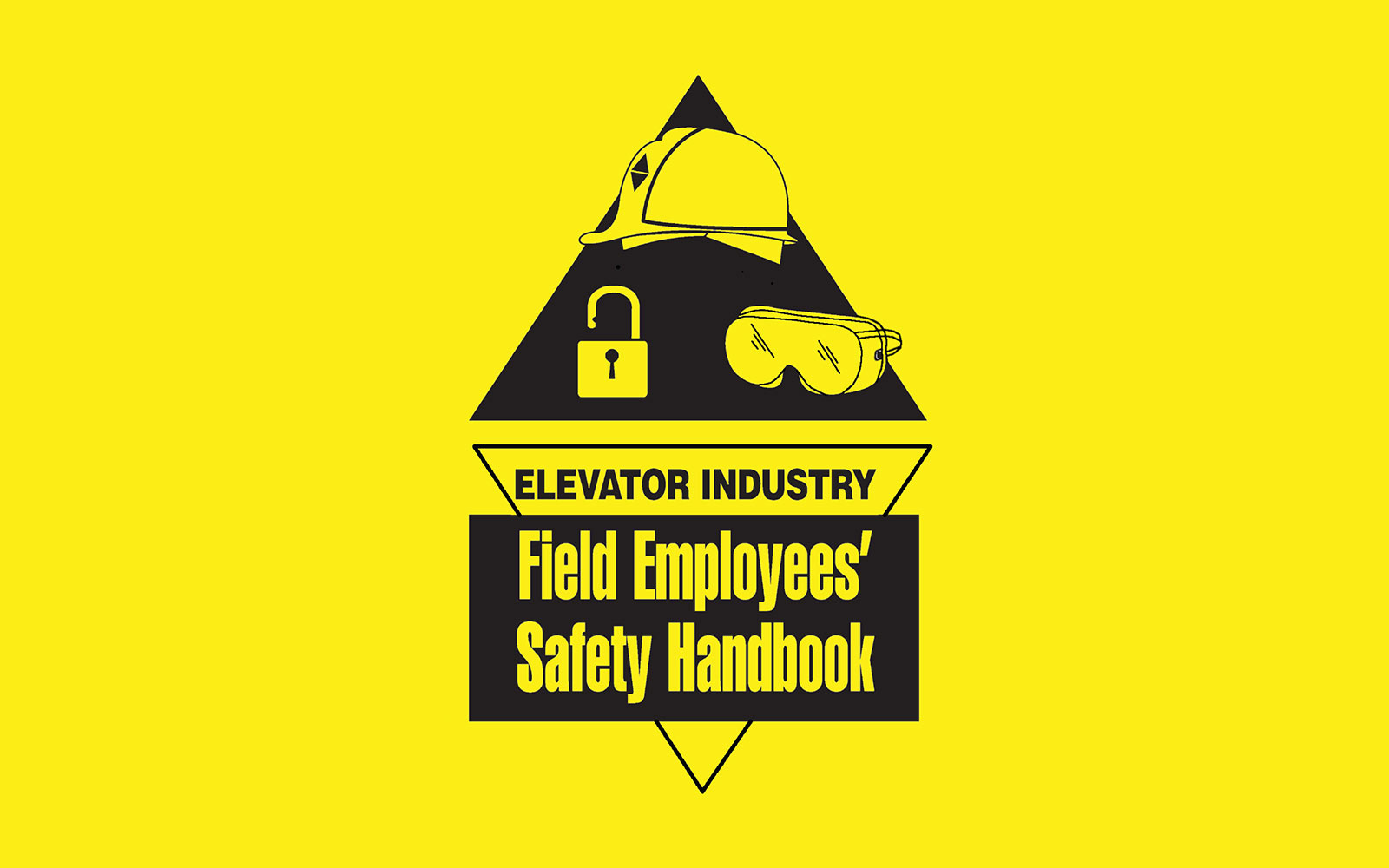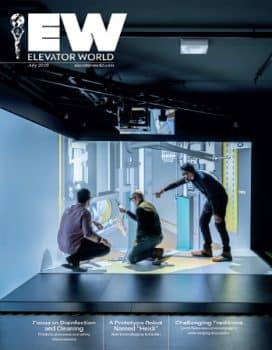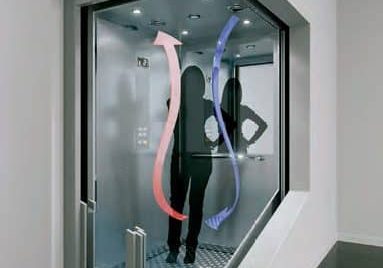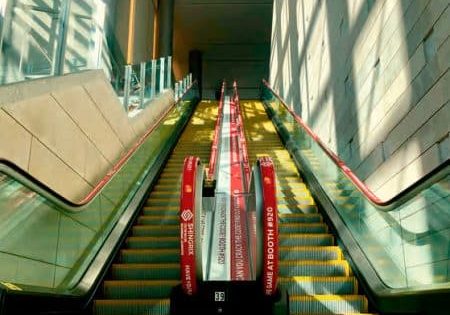“9 Safety Absolutes,” silica information among updates to popular portable guide.
The 2020 Elevator Industry Field Employees’ Safety Handbook is now available at elevatorbooks.com. As part of the five-year revision, all other safety materials based on the handbook have also been edited to complement it. The other materials include Safety Meetings, 2020 Edition; “Service & Repair PPE Assessment Forms”; A Manager’s Safety Notebook and the Mobile Safety Meetings app.
There are many changes in the 2020 version of the handbook, but most are subtle. The major changes are the addition of the National Elevator Industry, Inc.’s “9 Safety Absolutes” and instructions for dealing with silica on the jobsite. The absolutes are the processes critical to a safe work environment. They are:
- Fall Protection — Section 4.0
- Electrical Safe Work Practices —Section 5. 1
- Jumpers — Section 6.1
- Lockout Tagout (LOTO) — Section 7.1
- Mechanical Stored Energy — Section 7.1
- Car Top Access / Egress — Section 8.1
- Pit Access / Egress — Section 8.2
- False car and Running and Working Platforms — Section 11.0
- Hoisting and Rigging — Section 12.3
Changes/clarifications in the first two sections, “General Safety” and “Safety Inspections,” of the handbook include:
- “Employees shall not work when their ability or alertness is impaired by anything that might expose the employee or others to injury including but not limited to: fatigue; intoxicating beverages; illegal or prescription or over-the counter medication; any substance that can impair your physical, mental or emotional state.” This is to address questions arising in states where certain drugs are legal.
- Many items were added under “Pre-Startup Safety Surveys,” including a pre-lift meeting to discuss rigging hazards, rescue and emergency plans, removal of combustible materials where hot work is performed and inspection of fall equipment before every use.
- Several rules clarified the difference between entertainment devices, which are prohibited, and communication devices, which must be used with extreme caution in the hoistway and machine room. One addition is, “If two-way radios are used, ensure that channels are clear and not interfered with by other trades. Clear communications are required. All verbal commands shall be repeated by the receiving party and reconfirmed by the directing party.”
- The following is among items added in Section 3, “Personal
- “Wear class-specific reflective vest on jobsites where mandated or required by company policy.”
- “For prescription safety glasses, ensure the prescription is incorporated in its design, or the user wears eye protection that can be worn over the prescription lenses without disturbing the proper position of the prescription lenses or the protective lenses.”
The following was among changes in Section 4, “Fall Protection”:
- The definition of a fall hazard was changed to read:
- “. . .which exists when work takes place more than 6 ft. (1.8m) (unless the regulatory authority requires 4 ft. (1.2 m)) above a lower level and an opening more than 12 in. by 12 in.(305 mm by 305 mm).” This is repeated several times throughout the book.
- An OSHA-compliant cartop guardrail system illustration was added (Figure 1).
The following is added to Section 7, “Lockout and Tagout,” and Section 8, “Hoistways and Machine Rooms”:
“When working on the hydraulic system of a hydraulic elevator, mechanical controls shall be established by mechanically blocking or controlling the mechanical stored energy (i.e landing on rated pipe stands, rail blocks, etc.).” The following are among changes in Section 9, “Tools”:
- “Never place a toolbox or gang box in path of egress.”
- “If the insulation on an electric tool or cord is broken, cracked, missing or damaged, destroy and discard the tool or cord or tag out the tool until it can be evaluated and repaired by an authorized repair facility.”
The following are among changes in Section 10, “Portable Ladders/Scaffolds/Stationary Work Platforms”:
- “The assembly and disassembly of scaffolds and stationary work platforms shall be done using a personal fall arrest system (PFAS) and lifeline anytime there is more than a 6 ft (1.8 m) (unless the regulatory authority requires 4 ft. (1.2 m)) fall exposure.”
- “Scaffolds and stationary work platforms shall be tied into the building with rigid connectors spaced 4 times the minimum width at intervals not exceeding 26 ft (7.9 m)(certain jurisdictions may require tighter spacing).”
The following are among changes in Section 12, “Material Handling”:
- “Keep your eyes on task to the position of fingers and feet when using rollers, pinchbars, jacks and blocking to move heavy materials and equipment.”
- “Only properly manufactured wire rope or nylon slings and chokers shall be used for rigging. Never use a ‘homemade’ or altered sling or choker.”
The following are among changes in Section 14, “Hazard Communications (HAZCOM)”:
- “Never attempt to clean up a spill unless trained.”
- “Dispose of damaged batteries or other hazardous wastes properly.”
- A new section was added concerning Silica Dust:
- “14.12 Silica Dust
- “Crystalline Silica Policy and Procedures
- “(a) The term Crystalline Silica, Silicone Dioxide (SiO2) Chemical Compound refers to a natural compound commonly used in industrial materials. Quartz, the most common form of silica, is a component found in rock, sand, concrete, stone, brick, mortar and block.
- “(b) In accordance with OSHA 29 CFR 1926.1153, standard exposure control methods for relevant elevator and escalator associated installation/modernization/repair work will include, per the OSHA Table 1 for applicable tasks, special tooling, methods and, under some circumstances, mandatory respirator use until air monitoring is collected ensuring exposure level will remain below 25 ug/m3 during an 8-hour TWA under any unforeseeable conditions.
- “(c) At the time of publication, the following URL provided a direct link to the OSHA webpage for OSHA 29 CFR 1926.1153 and Table 1: https://www.osha.gov/laws-regs/regulations/standard- number/1926/1926.1153”
The handbook is edited by the National Elevator Industry, Inc. Field Safety Committee and copyrighted by Elevator World, Inc. Copies of all safety materials mentioned are available at Elevator Books.
Get more of Elevator World. Sign up for our free e-newsletter.










